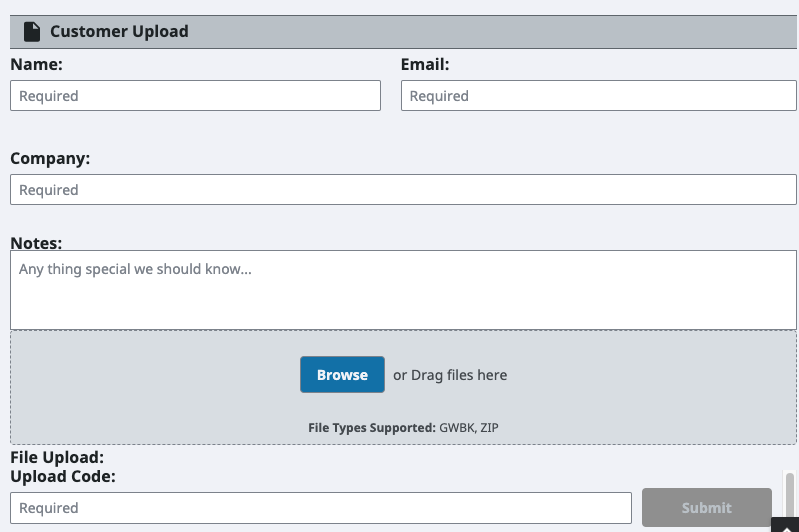Ignition In The Real World
Receiving system backups is critically important for our process. We review them for content, development style, design, overall complexity, tag counts—and for finding any gotchas ahead of time. We also run them through an analytics tool to give us a percent of how much the original system can be automatically converted to Ignition and what we will need to manually address.
Corso Systems uses Google Workspace, and it works very well for our email and internal file sharing. But, we’ve experienced some hiccups when sharing Google Drive folders with customers. Sometimes a customer will be logged in with their personal G-Mail account and can’t open the link without signing out. Some companies don’t allow their employees to interact with Google products, and occasionally plants are running older operating systems and customers will have browser version issues.
So, we decided to streamline the process and use Ignition itself to solve the difficulties of this process. Since most of our client work is covered by Non-Disclosure Agreements, we can’t always openly share the interesting Ignition work that we do, so we’re taking this as a golden opportunity!
An Ignition-Based Customer Upload Portal
To solve the problem of getting customer backups, we created an Ignition Customer Upload Portal on our own cloud-based Ignition instance.
We built the form using Ignition’s Perspective Module with standard text fields and the built-in file upload component. Each customer receives a link to the portal along with a unique code. They fill out the form, upload their backup files, add any notes they want to share with us, enter their code and upload their files.
Overall, this new approach has simplified the process for everyone. We don’t need to create a Google Drive folder, edit sharing permissions, and then wonder if the customer will have trouble accessing it—along with a thread of back and forth emails to find other options. Now they can visit the portal, upload the files, and enter their code. From there, we can dig into the files sooner than before.
Ignition Backend Magic
The most important parts of this project involved mapping out the backend operations on the file upload component (along with the submit button).
We added scripts to the file upload component’s onFileReceived and onUploadsCleared events to grab the filename and the data, and then to store them for further processing.
The submit button contains the remainder of the logic, including interactions with a Project Script Library. When a customer clicks the Submit button, all of the values from the texts fields are populated into variables, then a script runs to check for an existing folder on our server with the customer’s name (if the customer’s folder doesn’t exist, the script will creates one). Finally, the script validates the user’s code, and uploads the files.
Assuming the customer has completed each field, and uploaded a file, then the submit button is enabled.
Once the file submission is complete, the relevant information from the form is automatically emailed to our Senior Sales Engineer so they can go grab the backups and dig into them at their earliest convenience.
Wrapping Up
Our Ignition Customer Upload Portal greatly simplifies receiving our customers’ backup files. And since our sales team is automatically alerted when a customer uploads a file, we don’t need to wonder when a customer sends their files, or worry about follow-up emails from the customer alerting us to their file uploads.
We take a lot of pride in building easy-to-use tools for our customers, including potential customers. Even though this project is relatively simple, it shows what we can do with Ignition. It’s also an example of how Ignition can be so much more than just a SCADA system.
If you like posts like this, please reach out and let us know. We’ve built a lot of internal business process functionality using Ignition and can share more of it if there’s sufficient interest. We figure that if we are telling our customers to use Ignition for running their businesses more smoothly, we may as well walk the walk too!
Ready to start your Ignition project with Corso Systems?
Schedule a 15-minute intro call with Cody Johnson in Sales today:
https://meetings.hubspot.com/cody-johnson2
Or contact us with the details of your project.

